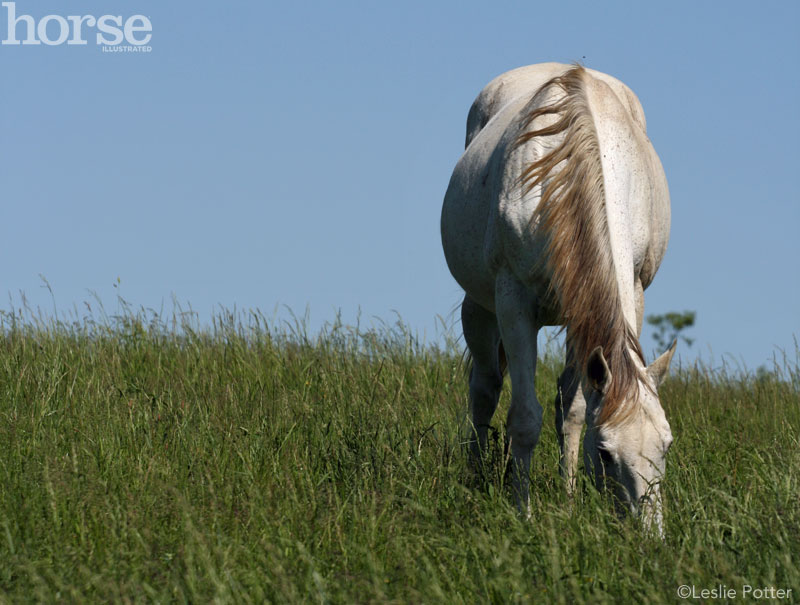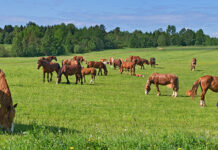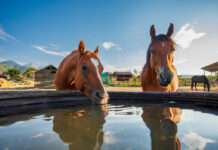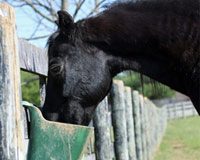
We humans, on the other hand, eat few, relatively large meals. Our gallbladder serves as a storage pouch for bile – the emulsifying agent produced by the liver that is needed to start fat digestion. When we eat a large amount of fat at one time, the gallbladder releases bile into the small intestine to aid in digestion.
Horses, on the other hand, are trickle feeders – they are supposed to continuously graze on forage, all day and all night long (virtually all the time, with a few minutes of napping here and there). The small amount of fat that they eat is easily managed by the liver. Therefore, there is no need to store bile in large quantities.
In recent years, however, fat has been shown to be an alternative to high starch diets, since it is more concentrated in calories. There was initial concern that large amounts of fat would not be sufficiently digested. However, the horse’s liver has the ability to compensate. This adaptation takes several weeks; therefore it is best to slowly increase fat levels.
Juliet M. Getty, Ph.D. is an internationally respected equine nutritionist available for private consultations and speaking engagements. Visit her website, www.gettyequinenutrition.com, for more equine nutrition information.






I never knew this. I learn so many things on HC.
learn something everyday
😯 <-- The face I made when I read this article!
Hi,
I am just woundering, than why rabbits, ruminants all have gallbladers, since they are not carnivore either and have to eat all day long small meals (especially rabbits)?!
Thanks,
L